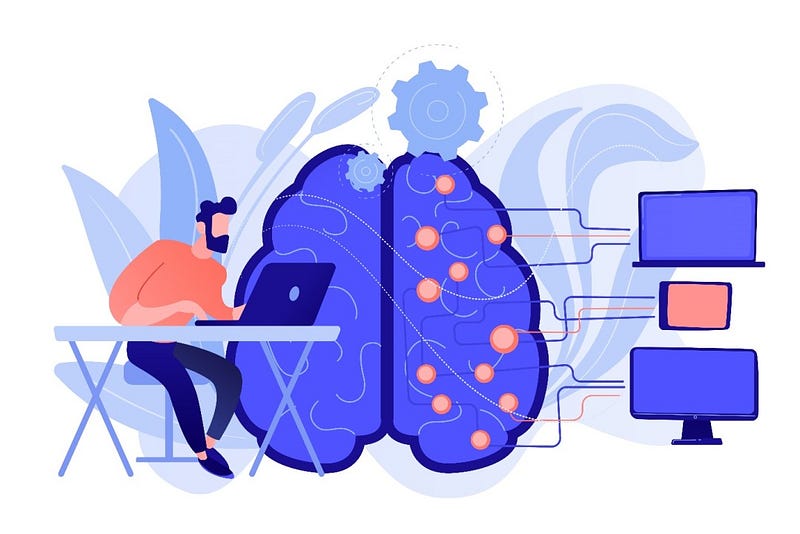Role-playing scenarios are used in a variety of contexts, from video games and theater to psychology and corporate team building. They’re valuable tools for empathy-building, problem-solving, creativity, and understanding complex systems from multiple perspectives. In the realm of artificial intelligence, role-playing can serve a unique and powerful function. Large language models like OpenAI’s ChatGPT can take on specific roles to provide personalized, context-specific responses, ushering in an era of interactive AI that’s tailored to individual user needs.
The Role-Playing Potential of ChatGPT
ChatGPT, based on the advanced GPT-4 architecture, represents a significant milestone in AI development. As a sophisticated model trained on a vast amount of text data, it has a detailed grasp of language and can generate contextually appropriate, natural-sounding responses. This makes it an excellent tool for role-playing in a wide range of scenarios.
For example, ChatGPT can simulate a conversation with a famous historical figure, or it can provide advice from the perspective of a fictional character. It can take on the role of a tutor in a specific subject, a customer service representative, or even a supportive friend. In these roles, ChatGPT can offer insights, solve problems, and facilitate learning, all while engaging users in a personalized, interactive way.
Understanding Role-Based AI Interactions
To fully appreciate the power of role-playing in AI, it’s important to understand the underlying principles that drive these interactions. The essence of role-playing in AI is its capacity to simulate a particular character or perspective based on the information it has been trained on.
To understand this concept, consider a role-playing game where you can interact with various characters, each with their distinct personality, knowledge, and behaviors. In these games, the characters’ responses are pre-programmed by the developers to align with their established personalities.
In contrast, ChatGPT doesn’t have pre-defined responses for specific roles. Instead, it uses its extensive language training to generate responses that fit the given role. This means that when you ask ChatGPT to play the role of, say, a famous physicist, it doesn’t draw on a pre-set list of responses. Rather, it uses its knowledge about physics and the general characteristics of physicists (gleaned from the texts it’s been trained on) to create a response that’s consistent with the role.
Personalization Through Role-Playing
One of the key benefits of role-playing in AI is personalization. With this ability, ChatGPT can adapt to the individual user’s needs and preferences. Users can customize their interactions by specifying a role for ChatGPT, allowing the AI to provide the precise type of interaction they’re looking for.
For instance, a user looking to learn more about quantum physics might ask ChatGPT to take on the role of a quantum physicist. In this role, ChatGPT would provide detailed explanations of quantum physics concepts, answer the user’s questions, and even suggest resources for further study.
On the other hand, a user looking for a supportive conversation might ask ChatGPT to play the role of a trusted friend or a mental health professional. The AI would then respond with empathy, understanding, and support, providing a form of digital companionship.
The Potential and Limitations of Role-Playing in AI
The role-playing potential of AI like ChatGPT is exciting, but it’s essential to understand its limitations. While ChatGPT can simulate a wide range of roles, it’s not capable of truly understanding or experiencing the world as a human does. For example, when ChatGPT plays the role of a historical figure, it doesn‘t genuinely know or feel what it was like to be that person. It’s merely generating responses based on patterns it has learned from the text it was trained on.
Additionally, role-playing in AI depends heavily on the quality and extent of the training data. While ChatGPT has been trained on a diverse and comprehensive dataset, there may be roles or scenarios it’s not equipped to handle accurately because it lacks the necessary training data.
Furthermore, AI models like ChatGPT have no consciousness, emotions, or personal experiences. They don’t form beliefs or intentions, and they don’t understand context in the same way humans do. So while they can generate impressive responses, these responses are ultimately the product of complex algorithms rather than true understanding or awareness.
Ethical Considerations in Role-Playing AI
As AI becomes increasingly interactive and personalized, it’s crucial to consider the ethical implications. For instance, while AI can simulate the role of a therapist or counselor, it doesn’t replace the need for professional mental health services. Similarly, while ChatGPT can take on the role of a tutor or teacher, it doesn’t replace the value of human educators.
Moreover, AI’s ability to simulate roles can potentially be misused. For example, someone could use ChatGPT to simulate a conversation with a specific real individual, which could lead to issues of privacy and consent.
To mitigate these risks, AI developers and users must follow ethical guidelines and prioritize respect for privacy, consent, and professional boundaries. They should also be transparent about the capabilities and limitations of AI, ensuring that users understand what AI can and can’t do.
Conclusion
Role-playing in large language models like ChatGPT represents a significant advancement in the field of artificial intelligence. It offers exciting possibilities for personalization, interactive learning, and digital companionship. However, like any powerful tool, it must be used responsibly and ethically. By understanding the potentials and limitations of role-playing AI, we can better harness its capabilities and create more engaging, helpful, and respectful AI experiences.
Find more … …
Machine Learning for Beginners in Python: Make Simulated Data For Clustering
Machine Learning for Beginners in Python: How to Add Interaction Terms in Linear Regression
